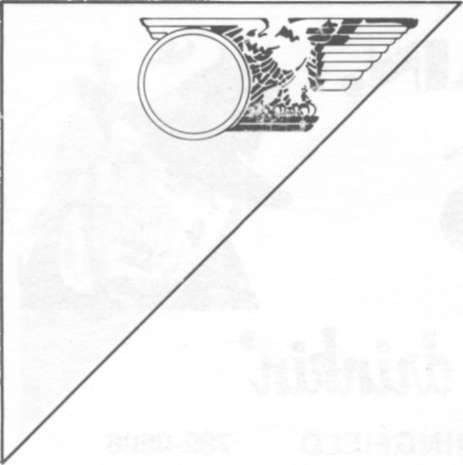 |
Home | Search | Browse | About IPO | Staff | Links |
 |
Home | Search | Browse | About IPO | Staff | Links |
|
Letters  Dissent to the Byron I rate decision EDITOR: As a longtime reader of Illinois Issues, I am accustomed to insight, accuracy and fairness from your authors in treating their subjects. I was thus extremely dissappointed to read Marc D. Allan's "Edison rate hikes: one size fits all" in your January issue. After reviewing a litany of earlier Illinois Commerce Commission (I1CC) decisions granting rate increases to Commonwealth Edison, he says of the most recent Byron I (October 24, 1985) decision: "Although the record shows a 4-3 split . . . (former chairman Philip) O'Connor said the three 'no' votes indicate that those commissioners declined to take a position on the final award, not that they altogether opposed a rate increase." Mr. Allan should have delved further. I wish that he had asked us, not the leader of the majority, what our votes meant. Three of us (as close as one can come to a majority without constituting one) dissented, and two of us wrote a carefully considered explanation of the complex factors shaping our dissent. It would have helped your readers if he had quoted from the dissenting opinion which Commissioner (now Chairman) Bushnell and I submitted. In brief, our dissent faulted the independent construction audit and I1CC staff supervision, analysis, testimony and other procedures in failing to provide necessary information for the purpose of ratemaking. We believed that neither the company, the auditors nor other parties clearly established (a) which costs of building Byron Unit I were prudently and reasonably incurred and should have been included in the rate base or (b) which costs were attributable to management imprudence and inefficiency. We believe that the commission cannot presume the reasonableness of any costs; that there must be a positive finding of reasonableness; that the record contained evidence of many suspect, but unquantified, costs; and that the law required there to be "a record ... in which the positive and negative consequences of key utility decisions were explored in such a way as to allow the Commisson to make informed judgments." We felt compelled, in good conscience, to vote against an order which was based on an unsubstantiated conclusion that all of the $2.5 billion cost of Byron I, except for $101 million, should be allowed in the rate base. We further recommended corrective procedures to be used in this and subsequent cases. In addition to the initial vote, the three dissenting commissoners also voted to allow all petitions for rehearing. I believe that our opinion and actions evidence a profound concern for fairly representing the interests of ratepayers and the utility within the context of the law, a fact not reflected in Mr. Allan's treatment of the topic. Predictably, there will be more pain for all parties in the course of resolving the inescapable complexities of other pending electric utility issues. I count upon Illinois Issues to illuminate (no pun intended) public understanding as we proceed. Susan C. Stone CIPS says Adlai was wrong about utility costs EDITOR: In an interview in your February 1986 issue, Adlai Stevenson incorrectly states that Illinois has "almost the highest utility costs in the country." The results of a survey of investor-owned utilties conducted by the National Association of Regulatory Utility Commissioners (NARUC) during the 1984-85 winter heating season cast a different light on the subject of utility rates. According to the survey, the average electric cost for Illinois consumers compared favorably to the average cost of electricity throughout the nation. Based on monthly usage of 500 kilowatt hours, the average residential cost for electricity in Illinois was 7.93 cents per kilowatt hour, compared to an average of 7.95 cents nationwide. The survey revealed that Hawaii's residential electric costs were the highest in the nation, at 13.17 cents per kilowatt hour. Following were New York at 11.32 cents, Connecticut at 11.24 cents and New Jersey at 11.14 cents. The states with the lowest rates, Washington at 4.14 cents per kilowatt hour, Oregon at 4.41 cents and Idaho at 4.83 cents, are those with an abundance of hydroelectric power, Ranking at 24th on the list is Illinois with its average cost of 7.93 cents. So, Ilinois is right in the middle. Allow me to point out that the NARUC survey was conducted independent of political beliefs and philosophies, and is therefore unbiased. Unfortunately, the sources from which public officials often get their information are groups with a political bias. The obvious reason is that such groups have something to gain politically. Impartial groups like NARUC conduct their surveys primarily to provide their members and other professionals with information which helps them perform their jobs Kenneth L. Andres, Manager 6/May 1986/Illinois Issues |
|
|